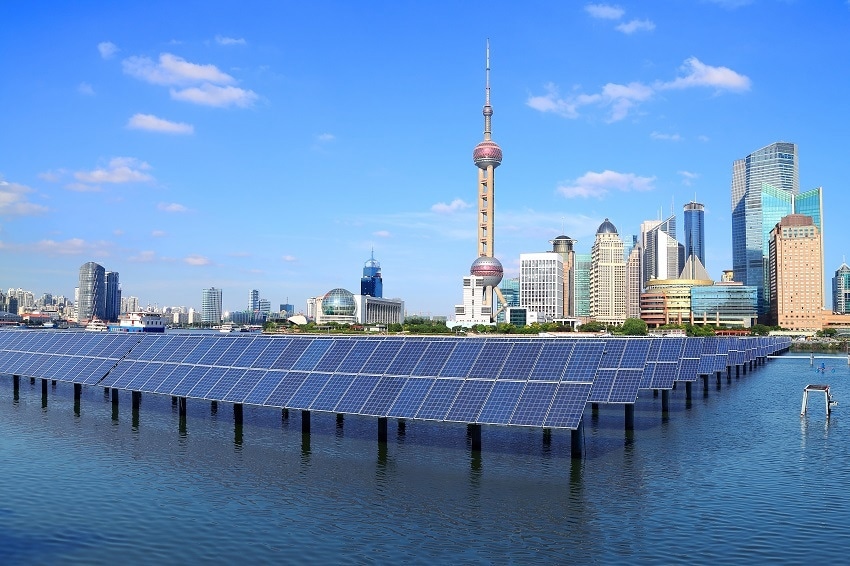-2.jpg) By Thomas HornigoldApr 17 2018
By Thomas HornigoldApr 17 2018
Image Credit:Shutterstock/ArtisticPhoto
Introduction
It is no longer hyperbole to describe what’s happening in the solar power industry as a revolution. It began with the price of solar cells falling through the floor – a remarkably sustained run of exponential price decline.
In 1977, each watt of capacity for a silicon solar panel would cost you around $76 – rendering them essentially impractical for most purposes. By 1987, that had dropped to $10. In 2017, according to EnergyTrend, it was $0.22.
The result has been greater investment in solar panels installed, both domestically and in ever-growing solar farms. Consequently, the cost of generating solar electricity has also reduced, as economies of scale start to benefit the solar industry.
Energy Resources
If you measure using the levelized cost of electricity, which attempts to calculate the generation cost across an array of different methods of electricity production, taking into account the costs of the fuel and construction of facilities then solar is already cheaper than coal at the utility scale and comparable to natural gas and wind.
Natural gas does have the advantage of being easier to store and less intermittent than solar energy, but renewables are no longer “too expensive.” This has only become true in the last few years, but it means that market forces are for once shifting towards renewables. The results have been staggering: in 2017, 98GW of solar capacity was installed, exceeding the newly installed capacity of all fossil fuels combined. It attracted $161bn of investment, 60% more than the $103bn invested in coal and natural gas generation.
Solar Revolution
Looking at 2017’s statistics, it’s easy to see that China has been a driving force behind this revolution. Of the 98GW of capacity added, China added 53GW, and they also invested $86.5bn of the $161bn of global investment. The reasons are twofold; as China grows economically at an extraordinary rate, it increasingly needs electricity: its government is hardly averse to massive infrastructure projects.
As well as this, China feels the need to show that it is doing something to address the environmental concerns of climate change and air pollution, much of it due to burning coal, which provides 60% of the country’s energy mix. (Solar is still hovering around a few percentage points, so this growth will need to be sustained for some time if it’s going to become a major player.) It seems likely, though, that China’s coal consumption is close to peaking.
Given that 1.6 million people a year die prematurely from air pollution in China alone, they will hope that declining coal use and stricter environmental regulations will take effect. As the manufacturer of most of the world’s solar panels, China can also hope to benefit from the growth of the industry.
They are not the only country who takes solar seriously. Recently, the new crown prince of Saudi Arabia – Mohammed bin Salman – has signed a letter of intent with the Japanese corporation Softbank to create the world’s largest solar energy scheme. It only exists on paper at present but if constructed, the 200GW solar project would be a hundred times larger than any other planned project.
It would triple Saudi Arabia’s electricity generation, and would be comparable to the current globally installed capacity of around 300GW. Saudi Arabia are motivated by a desire to reduce their economic dependence on oil which, after all, is a finite resource. In a world where solar power makes up a significant fraction of the energy mix, having deserts with large amounts of insolation becomes a new type of natural resource by itself. Although the original plan to install a huge solar panel
Future Prospects
The fact that developing economies and established fossil fuel economies are beginning to take the reins of solar panel investment is a good sign; as the standard of living and energy consumption in these countries rises to be equivalent to levels in the West, it will be disastrous for the planet and for our remaining stock of natural resources if they do so in the same fossil-fuel intensive way as the western economies industrialised. Yet it should also be remembered that Germany, with its Energiewende policy, has around 35% renewable energy in its electricity mix – approximately 7-8% of its electricity was generated by solar power in 2016.
In 2016, Japan has 14% of the world’s installed solar power capacity – but given that the Fukushima disaster has soured that country on nuclear power plants, it seems likely that solar power will continue to grow in the archipelago. Germany has 14%, and the United States had 13.6% - although such is the incredible growth of solar power that China, by installing 53GW in 2017, installed more than the total solar power capacity in the US.
Given the current administration in the US is undermining the solar power industry by imposing tariffs on imports while investing little in the domestic solar industry, it seems likely that China and, increasingly, India will continue to lead the way in the solar power revolution.
Disclaimer: The views expressed here are those of the author expressed in their private capacity and do not necessarily represent the views of AZoM.com Limited T/A AZoNetwork the owner and operator of this website. This disclaimer forms part of the Terms and conditions of use of this website.